
The Perfect General is a computer wargame published in 1991 by Quantum Quality Productions.

A-10 Tank Killer is a 1989 combat flight simulation video game for DOS developed and published by Dynamix. An Amiga version was released in 1990. The game features an A-10 Thunderbolt II attack aircraft. Following the success of Red Baron, version 1.5 was released in 1991 which included Gulf War missions and improved graphics and sounds. Several mission packs were sold separately. A sequel published by Sierra, Silent Thunder: A-10 Tank Killer II, was released in 1996.

Armor Alley is a computer wargame for DOS and Mac OS published by Three-Sixty Pacific in 1991. It is modelled on the Apple II game Rescue Raiders. Player can compete against the computer or other humans via LAN. The game supports cooperative multiplayer of up to two players per side. The player controls a helicopter armed with a limited number of munitions, such as missiles, bombs, machine guns, and napalm. As the player requisitions computer-controlled tanks, infantry, engineers. Mobile missile platforms, and vans round out available firepower.
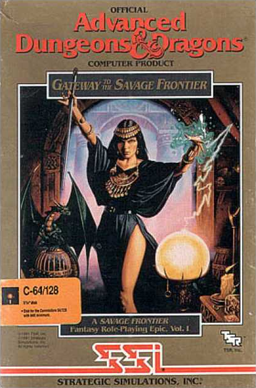
Gateway to the Savage Frontier (1991) is a Gold BoxDungeons & Dragons computer game developed by Beyond Software and published by SSI for the Commodore 64, PC and Amiga personal computers.

Castles II: Siege and Conquest is a 1992 real-time strategy game for the MS-DOS, developed by Quicksilver Software and published by Interplay Productions. Castles II is the sequel to the 1991 game Castles. Ports for the Amiga CD32, FM Towns, NEC PC-9801 were released in 1993. DOS CD-ROM version and Macintosh port were released in 1994. The Macintosh version of the game was published by Interplay's MacPlay brand name. GOG.com released an emulated version for Microsoft Windows in 2008.

Hard Nova is a role-playing video game developed by Malibu Interactive and published by Electronic Arts in 1990 for DOS, Amiga and Atari ST. It is a follow-up to Sentinel Worlds I: Future Magic.

Centurion: Defender of Rome is a turn-based strategy video game with real-time battle sequences, designed by Kellyn Beck and Bits of Magic and published by Electronic Arts. Originally released for MS-DOS in 1990, the game was later ported to the Amiga and the Sega Genesis in 1991. Centurion shares much of the concept and feel with Beck's earlier game Defender of the Crown (1987).

RoboSport is a 1991 turn-based tactics computer game. It was created by Edward Kilham and developed and published by Maxis.

Black Gold is a business simulation game released in 1989 by reLINE Software.

F29 Retaliator is a combat flight simulator video game developed by Digital Image Design and published by Ocean Software in 1989 for the Amiga and Atari ST, 1991 for the PC, and for the FM Towns and NEC PC-9801 in 1992-1993. Its working title was just Retaliator. The game was developed during the end of the Cold War, based mostly on speculations on then-future aircraft that were expected to be in use by the year 2002, in particular based on the design of the Lockheed Martin F-22 and the Grumman X-29A.

Crusaders of Khazan is a computer adaptation of the tabletop role-playing game Tunnels and Trolls, developed and published by New World Computing in 1990 for DOS, FM Towns, PC-88 and PC-98. The game is available from Flying Buffalo and in Fiery Dragon's Tunnels and Trolls 30th Anniversary Edition. The game was an international production, designed and directed in the US but programmed in Japan.

Knights of the Sky is a World War I combat flight simulator designed by Jeff Briggs and published by MicroProse in 1990 for MS-DOS. Ports to the Amiga and Atari ST followed in 1991.

Halls of Montezuma: A Battle History of the U.S. Marine Corps is a computer wargame developed by Strategic Studies Group in 1987 for the Apple II. Ports were released for the Commodore 64, Amiga, MS-DOS, and Apple IIGS.
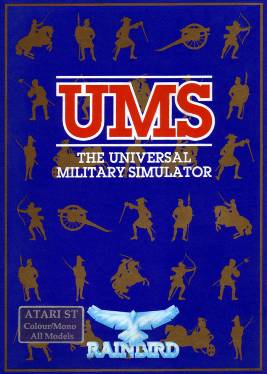
The Universal Military Simulator is a computer game developed by Rainbird Software in 1987 for the Macintosh, Tandy 4000, and IBM PC compatibles. In 1988, both Atari ST, Amiga versions were released. The game was created by Ezra Sidran. The PC and Amiga versions were ported by Ed Isenberg. The game spawned two sequels: UMS II: Nations at War and The War College: Universal Military Simulator 3.

Harpoon is a computer wargame published by Three-Sixty Pacific in 1989 for DOS. This was the first game in the Harpoon series. It was ported to the Amiga and Macintosh.

The Keys to Maramon is a video game published by Mindcraft in 1990 for MS-DOS. It takes place in the same universe as The Magic Candle.
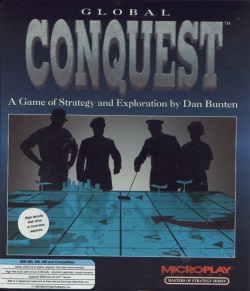
Global Conquest is a video game published by Microplay Software in 1992 for IBM PC compatibles. It is a version of Empire with numerous gameplay upgrades and a multi-player mode supported via modems.
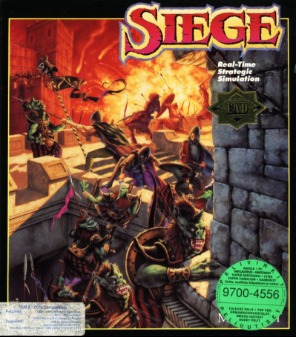
Siege is a video game released by Mindcraft in 1992 for MS-DOS. An expansion pack, Dogs of War, was released. It added multiplayer, six new castles, and 16 new units to the game. A sequel, Ambush at Sorinor, was released in 1993.
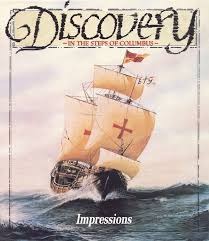
Discovery: In the Steps of Columbus is a video game developed by Impressions Games and published in 1992 for Amiga, Atari ST, and MS-DOS compatible operating systems.

Warlords is a computer wargame released in 1990 for the Amiga and MS-DOS compatible operating systems, then in 1992 for Macintosh. It was designed by Steve Fawkner and developed by Strategic Studies Group. Warlords was followed by three sequels and several spinoffs. The game was based on designer Steve Fawkner's Dungeons & Dragons campaign.




















